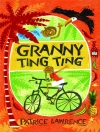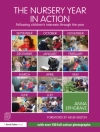This volume contains contributions that consider new approaches to three areas: the documentation of rock art; its interpretation using indigenous knowledge; and the presentation of rock art. Working with Rock Art is the first edited volume to consider each of these areas in a theoretical rather than a technical fashion, and it therefore makes a significant contribution to the discipline. The volume aims to promote the sharing of new experiences between leading researchers in the field. While the geographic focus is truly global, there is a dominant north-south axis with strong representation from researchers in southern Africa and northern Europe, two leading centres for new approaches in rock art research. Working with Rock Art opens up a long overdue dialogue about shared experiences between these two centres, and a number of the chapters are the first published results of new collaborative research. Since this volume covers the recording, interpretation and presentation of rock art, it will attract a wide audience of researchers, heritage managers and students, as well as anyone interested in the field of rock art studies.
विषयसूची
Chapter 1. Rock art management: Juggling with paradoxes and compromises, and how to live with them
Anne-Sophie Hygen and Alexey E. Rogozhinskiy
Chapter 2. Expressing intangibles: A recording experience with /Xam rock engravings
Janette Deacon
Chapter 3. Aspects of documentation for conservation purposes exemplified by rock art
Terje Norsted
Chapter 4. The position of rock art: A consideration of how GIS can contribute to the understanding of the age and authorship of rock art
Thembi Russell
Chapter 5. R ock art in context: Theoretical aspects of pragmatic data collections
Tilman Lenssen-Erz
Chapter 6. Representing southern African San rock art: A move towards digitisation
Dipuo W. Mokokwe
Chapter 7. The routine of documentation
Knut Helskog
Chapter 8. Prehistoric explorations in rock: Investigations beneath and beyond engraved surfaces
Trond Lødøen
Chapter 9. Politics, ethnography and prehistory: In search of an ‘informed’ approach to Finnish and Karelian rock art
Antti Lahelma
Chapter 10. Ethnography and history: The significance of social change in interpreting rock art
David G. Pearce
Chapter 11. Symbols on stone: Following in the footsteps of the bear in Finnish antiquity
Juha Pentikäinen
Chapter 12. Animals and humans: Metaphors of representation in south-central African rock art
Leslie F. Z ubieta
Chapter 13. Ways of knowing and ways of seeing: Spiritual agents and the origins of Native American rock art
David S. Whitley
Chapter 14. R ock art, shamanism and history: Implications from a central Asian case study
Andrzej Rozwadowski
Chapter 15. Presenting rock art through digital film: Recent Australian examples
Paul S. C. Taçon
Chapter 16. Rock art at present in the past
Lindsay Weiss
Chapter 17. The importance of Wildebeest Kuil: ‘A hill with a future, a hill with a past’
David Morris
Chapter 18. Theoretical approaches and practical training for rock art site guiding and management
Janette Deacon and Neville Agnew
Chapter 19. Two related rock art conservation/education projects in Lesotho
Pieter Jolly
Chapter 20. Norwegian rock art in the past, the present, and the future
Gitte Kjeldsen
Chapter 21. The presentation of rock art in South Africa: Old problems, new challenges
Ndukuyakhe Ndlovu
Chapter 22. Yellowstone, Kruger, Kakadu: Nature, culture and heritage in three celebrated national parks
Catherine Namono and Christopher Chippindale
लेखक के बारे में
Leslie Zubieta is a Research Associate in Rock Art Research Institute, University of the
Witwatersrand, Johannesburg.












